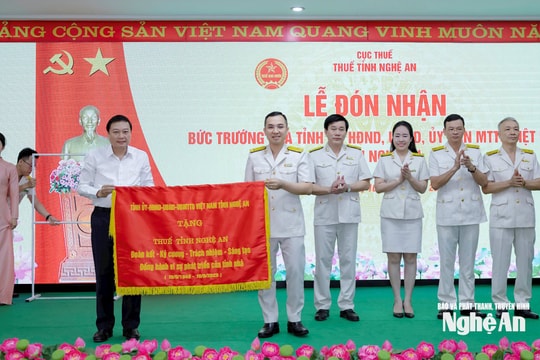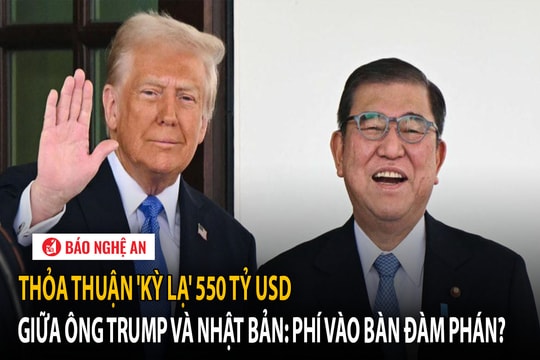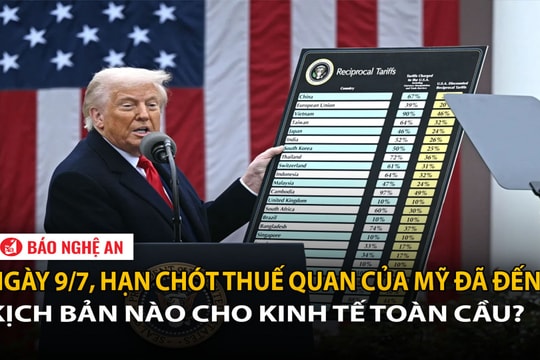Finding the answer to the question after 15 years of the 'father' of BRICS
(Baonghean) - The 8th Summit of the Group of the World's Leading Emerging Economies (BRICS), including Brazil, Russia, India, China and South Africa, took place on October 15 and 16 in Goa (India) on the occasion of the 15th anniversary of its formation and development. This is an opportunity for leaders to discuss a common plan to develop BRICS commensurate with its existing potential.
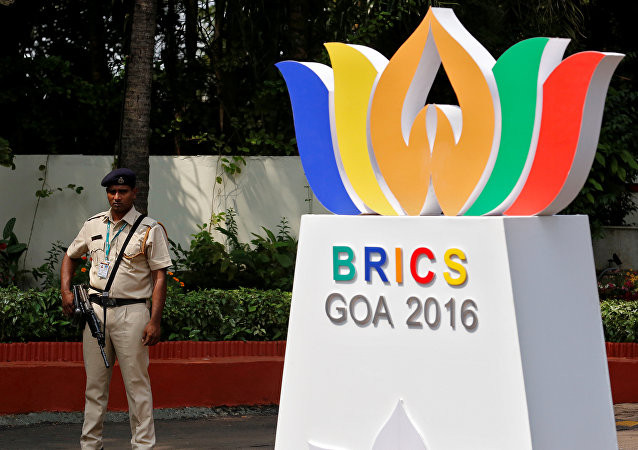 |
| The 8th summit was held in Goa, India from October 15-16. Photo: Sputnik. |
Not worthy
In 2001, Goldman Sachs senior economist Jim O'Neil first coined the term "BRIC" which stands for Brazil, Russia, India and China. It was not until 2009 that the group held its first summit in Russia and a year later, BRIC was renamed BRICS with the participation of South Africa.
Exactly 15 years later in an article, the “father” of the BRICS concept raised the question of whether these large and promising economies have achieved their goals?
In fact, since the concept of “leading emerging economies” was born, the world has placed much attention and expectation on the breakthrough development of this group of countries. The formation of BRICS reflects the connection between countries that want to escape the “scrupulous” position of the Europe-US-Japan trio.
With the advantage of population accounting for 43% of the total global population and 26% of the world's area, BRICS really has many opportunities for development. Besides, each country has its own potential and strengths: Brazil is strongly developed in agriculture; Russia has the world's leading oil and gas reserves; India has a level of information technology development and a huge knowledge base; China has abundant human resources; and South Africa has the largest economy in Africa.
According to the International Monetary Fund (IMF), BRICS currently accounts for 15% of global economic output. The total foreign exchange reserves of BRICS countries amount to 4,400 billion USD, of which China accounts for about 3/4. The BRICS group has become the locomotive, playing the role of driving force in promoting the world economic recovery after the financial crisis.
The most notable achievement demonstrating the cohesion and cooperation among BRICS countries is the establishment of the New Development Bank in July 2014. This bank model is considered to be a counterweight to financial institutions that the West has dominated for decades. Experts say this is a concrete step towards the goal of establishing a fairer global order.
However, BRICS’s achievements seem to be unworthy of its potential. Not to mention, after 15 years of formation, BRICS is now facing major challenges.
Russia's economy is struggling due to the sharp drop in world oil prices, while China's industrial production has also declined sharply. Brazil and South Africa are also facing a double crisis.
Besides serious economic and social difficulties, there is also political instability. Although India has a lot of potential, it has not really made a breakthrough, the number of poor people still accounts for a high proportion in society.
In addition, the unfavorable external economic environment also has a major impact on the growth of emerging economies. All these signs require BRICS to have a new strategy for the next stage to promote growth of member countries and restore the group's position.
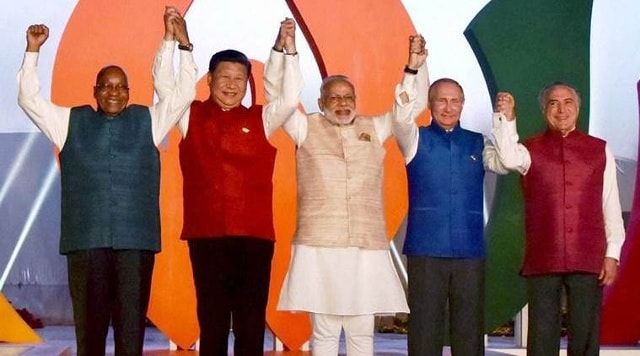 |
| BRICS leaders pose for a group photo on October 15 in India. Photo: PTI. |
Need coordination
At this 8th Summit, as the Chair of BRICS this year, India has proposed the theme “Building Responsive, Inclusive and Collective Solutions”. This means that BRICS recognizes the need for closer coordination among its members to be able to adapt and address challenges from within and without.
Observers say that for a long time, BRICS members have been developing in a “each going their own way” and “each doing their own thing”. While China focuses on exports, Russia focuses on resource exploitation.
Therefore, when adverse factors from the global economic environment hit, the response became fragmented and led to overall weakening. Realizing this, it can be seen that the agenda of this BRICS Summit, the leaders focused on discussing the promotion of intra-bloc economic cooperation, especially mechanisms to create cohesion between the economies of member countries.
Specifically, at the meeting of BRICS finance ministers and central bank governors on the evening of October 15, the ministers agreed to move towards new areas of cooperation proposed by India such as the establishment of the BRICS Institute for Economic Research and Analysis as well as the BRICS credit rating agency which were also discussed.
China has previously proposed the creation of an intra-bloc free trade area, stressing that the move would create “an important form of cooperation” among member countries.
By establishing a free trade area, BRICS countries will be able to eliminate tariff and non-tariff barriers, fully demonstrate their competitive advantages, and promote trade and investment liberalization within the bloc, according to China's Ministry of Commerce. The ministry said that a free trade area will help BRICS countries achieve common benefits and development, as well as promote South-South cooperation on a global scale.
According to economic experts, the BRICS economies will continue to play an active role in shaping the global architecture of growth and development in the future. Although facing many major challenges, if BRICS can skillfully remove barriers, this group can completely break through and maximize their true potential.
Thanh Huyen
| RELATED NEWS |
|---|


